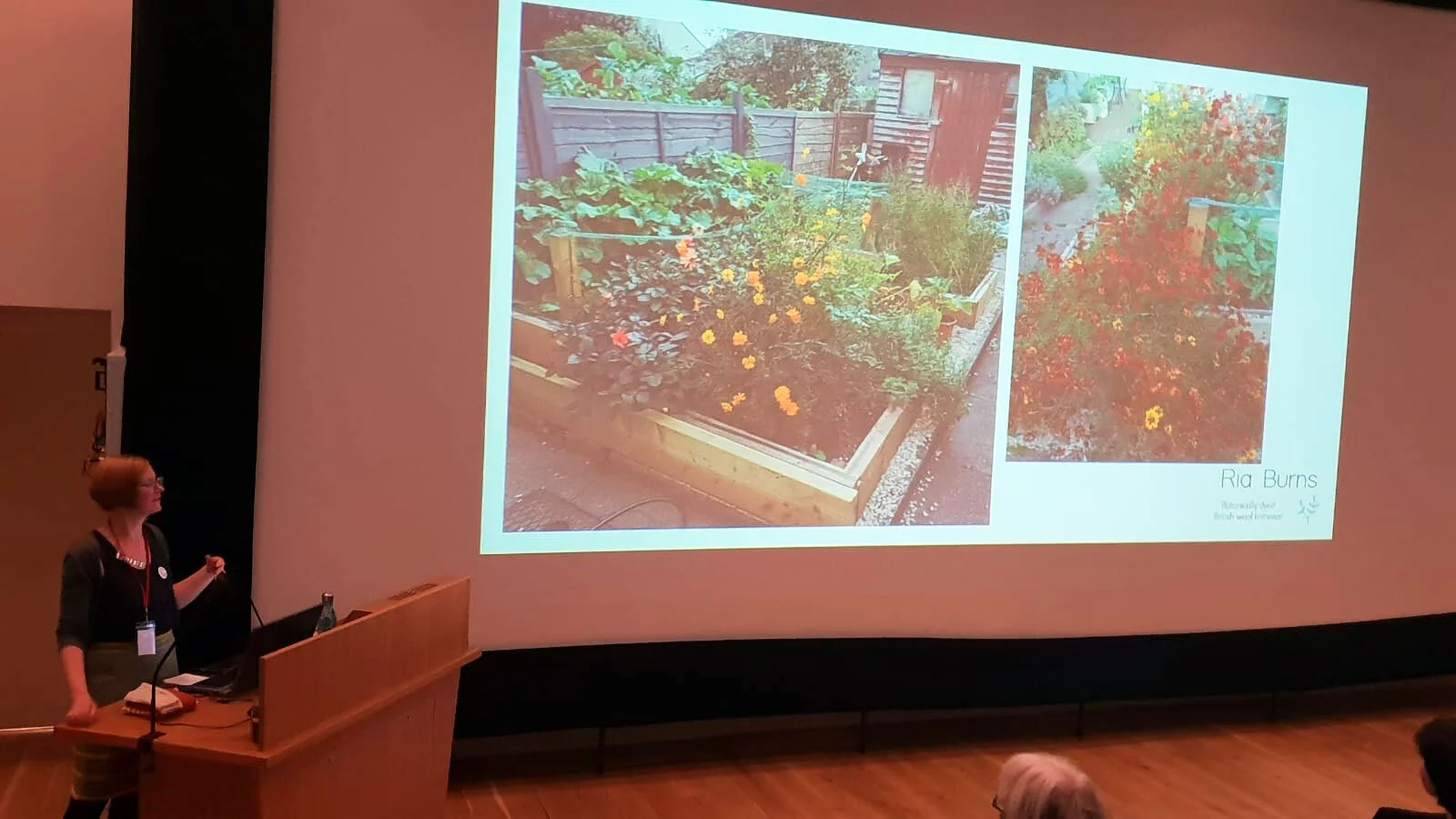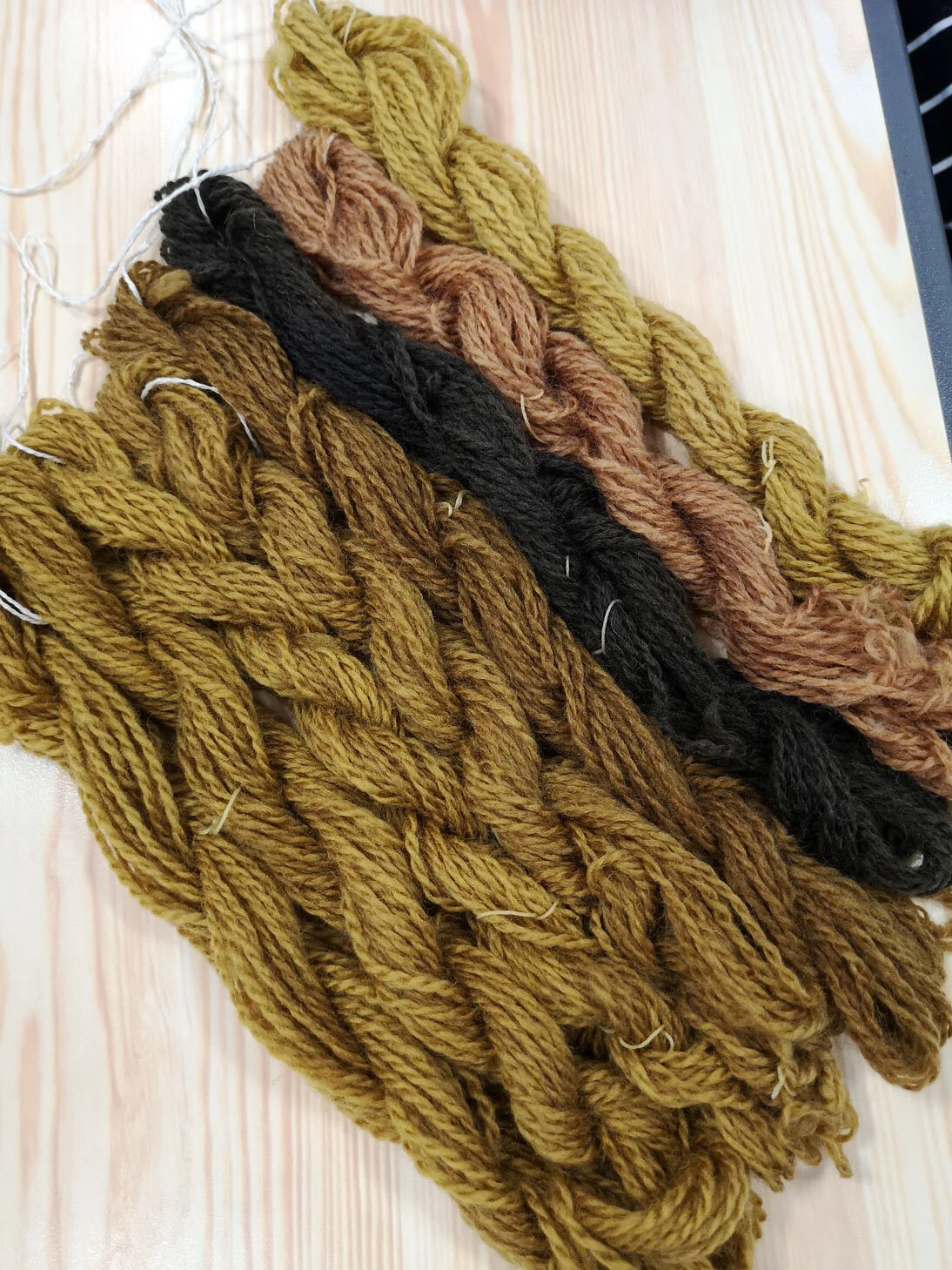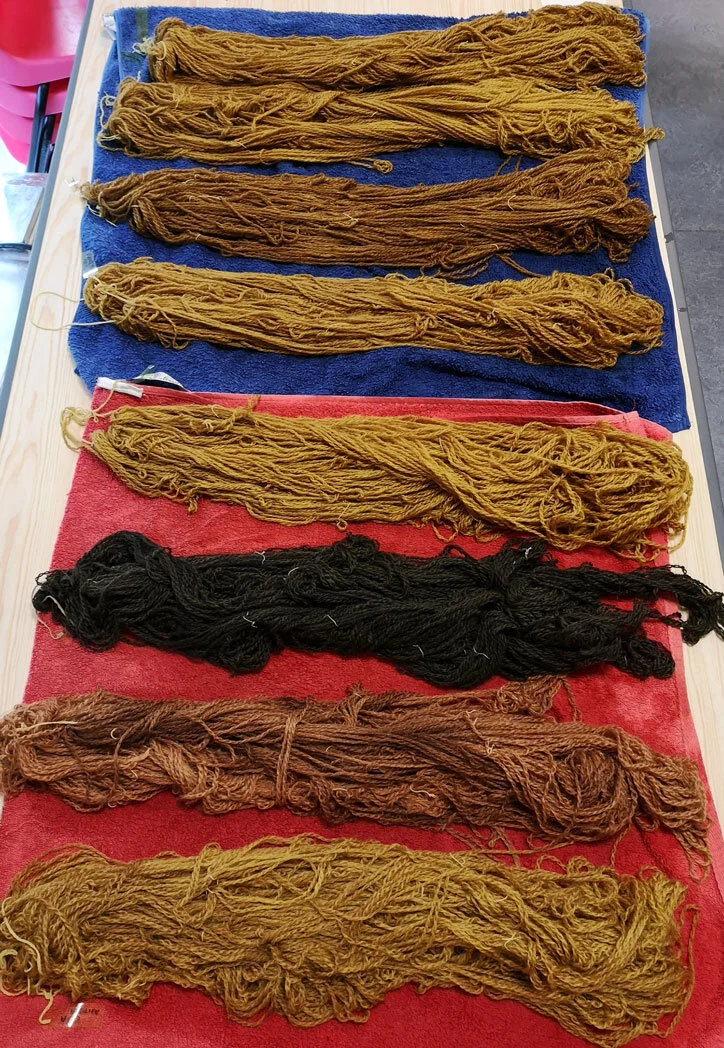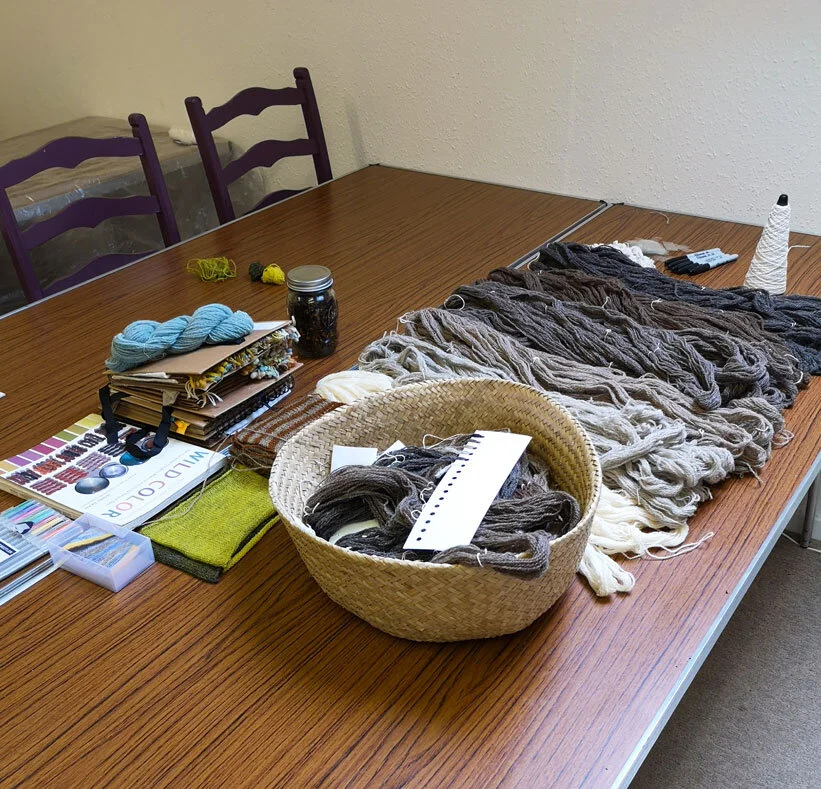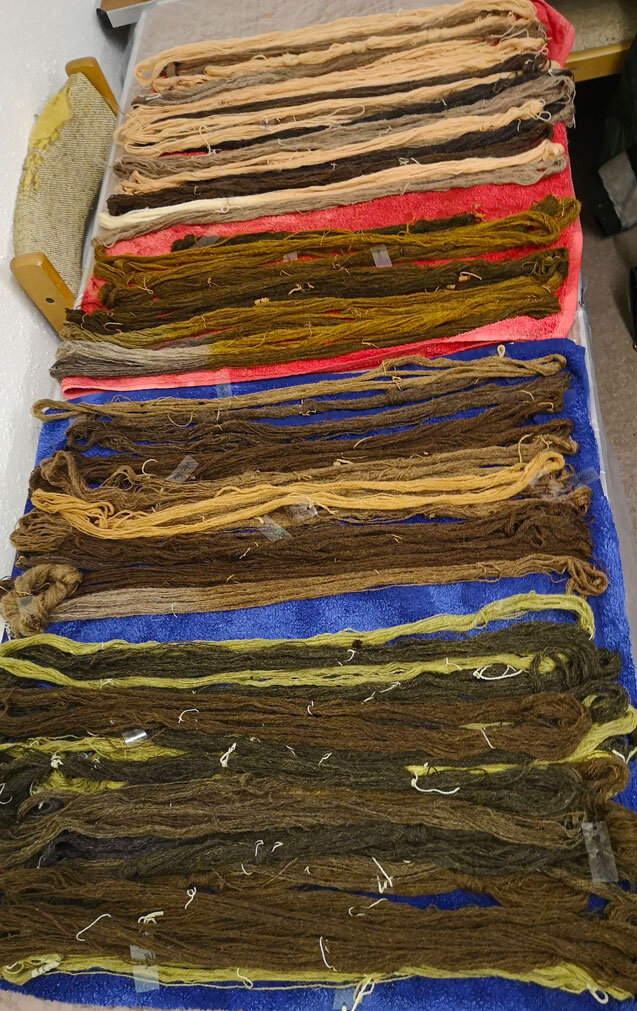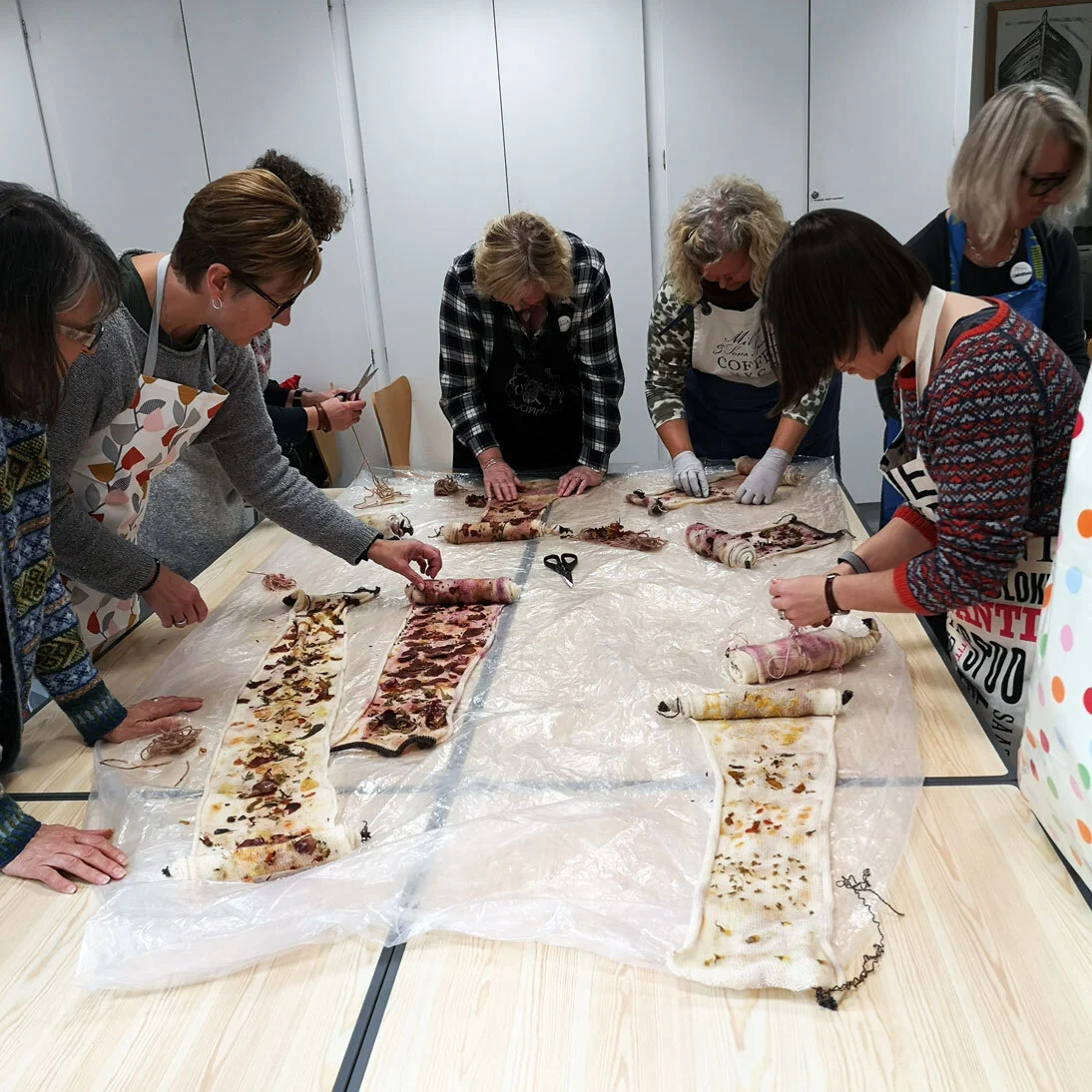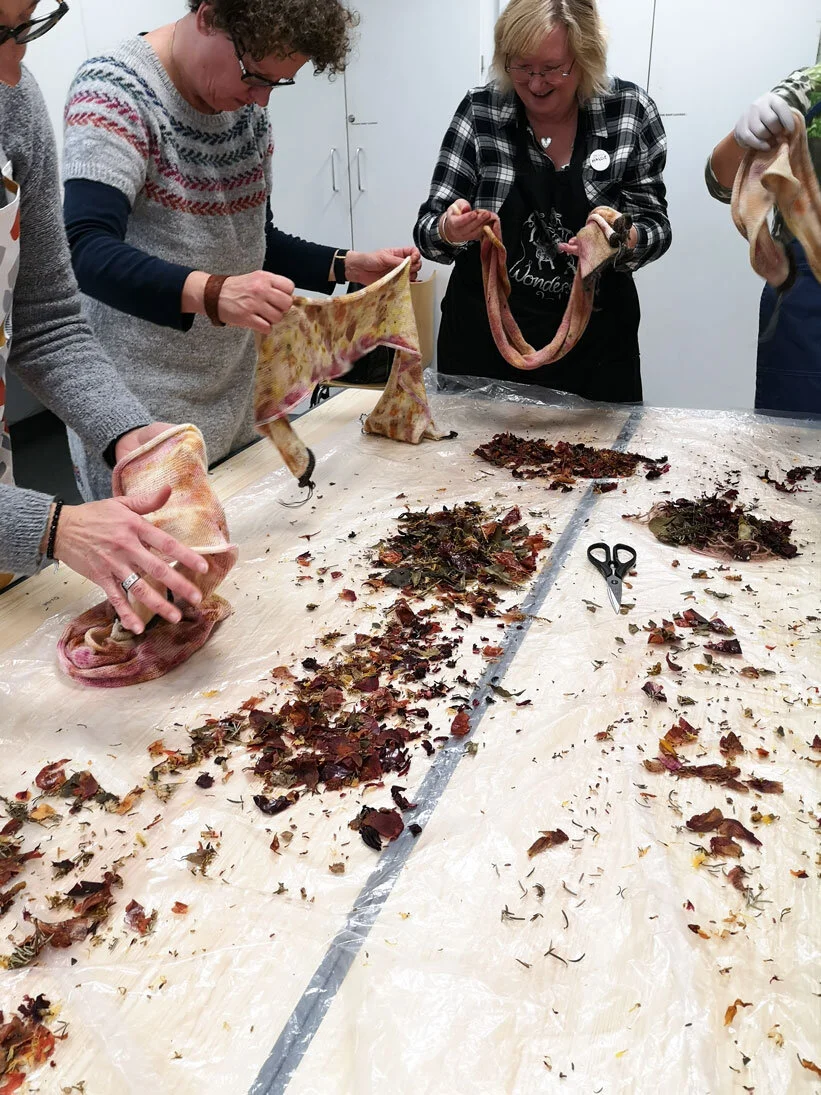Shetland Wool Week 2019 Part 1 : Teaching Natural Dye Workshops and Talking Sustainability in Knitwear
I can’t believe it’s four months since Shetland Wool Week 2019! I fully intended to write this as soon as I got back, but, as if often the case, life and work got pretty busy so it’s had to wait until now. This is the first of two posts about my experience at Wool Week and talks about my teaching, the second is about my experience of visiting Shetland and Wool Week with lots of images and can be found here.
The 10th annual Shetland Wool Week was my first as a visitor and also as a tutor. It was a real honour to be invited up to teach and share my passion for natural dyes, British wool and sustainability. My schedule consisted of a talk and three natural dye workshops.
Sustainable Knitwear: A Work in Progress Talk
My first activity was, rather dauntingly, a talk at the Shetland Museum. Held over lunchtime on the Monday, it was situated in the large lecture theatre which made me quite nervous! I had a great audience who were enthusiastic to learn about my story so far and how I work sustainability into each step of my process.
After an overview of my story so far and why I became so passionate about sustainability, British wool and natural dyes, it was time for a show and tell.
I talked through a selection of pieces, mostly from my MA collection, to illustrate my process and showcase the beauty of natural dyes and the variety in British wool yarns. These were passed around the audience as I talked, I think it’s really important to be tactile and visual when you are discussing textiles and colour.
At the end I took questions from the audience which provoked some excellent points of discussion - it was so good to hear so many people enthusiastic about doing things sustainably. With a global audience the Fibreshed conversation was particularly interesting, hearing first hand how the model operates in Australia and America, which gave me many ideas to feed back when I got home. A great start to the week!
Natural Dyes: Mordants and Colour Variation at Shetland Museum
This workshop was so show the variety in colours that can be achieved with just one dye plant by using different mordants and modifiers. We used mini skeins of Adam Curtis Online’s Shrink Resist Shetland yarn, which I know from experience takes dye really well.
We made 9 different shades using no mordant, alum, Symlpocos, rhubarb leaf, copper, iron, acid and alkali, either pre treating the yarn with a mordant or modifying afterwards. The shades ranged from pale yellow to a very dark green, to pink!
The great thing about teaching natural dyeing is there is time to discuss while the dye pots are doing their thing, so we talked through my dye records as well as growing and foraging for dye plants.
The results were good, but not quite as dramatic as I was expecting. One of the students mentioned that the water is much softer up in Shetland, compared to the very hard water I have at home in Bristol. This ultimately affected the results of the dyeing, and could explain why my sample skeins were so different to the outcomes from this workshop. It’s a really interesting topic - I feel there is a whole PhD thesis in the making here - ‘Water and Place in Natural Dyes’?
Sustainable Natural Dyeing at Jamieson and Smith Wool Brokers
My second workshop of the week was at Jamieson and Smith Shetland Wool Brokers - home to all of the lovely wool! As I made my graduate collection from their yarn it was particularly exciting to visit and teach at the source.
We used seven shades of their Heritage Naturals yarn range (all but Shetland Black) in mini skeins, to show how different hues can be achieved using the natural sheep shades as a base.
Using avocado skins, onion skins, homegrown coreopsis flowers and weld extract, the students chose which colours to dye which skeins, and decided whether to dye the whole skein, dip dye or tie dye. This provoked a lot of discussion around colour, luckily I had plenty of samples ready to guide the students.
During the workshop, we had some VIP visitors, including Nicholas Coleridge, the chairman of the Campaign to Wool (behind me in the photo). Thanks to Adam Curtis for taking a photo of me teaching, I rarely get the chance to have this happen during a workshop!
As I had learnt about the water differences in my previous workshop, I made sure to check the pH of the dye baths and adjust as necessary. If the shades were pale, I checked to see if the students would like the colours to be deeper, and added washing soda in order to make the liquid more alkali. Alum and cream of tartar (the mordant I used to treat the yarn) is acidic, so the pH usually needs altering, particularly with plants such as coreopsis and weld. Adjusting the pH of an avocado dye bath tends to shift the colour from peach to pink, but not always!
Some great shades were achieved in this workshop, with even the really dark sheep shades overdyeing well, particularly with the onion skins and weld. I asked the students to tag me in any photos of what they had made with the dyed yarn - to my surprise I had been sent some images of finished objects before Wool Week had even finished!
Bundle Dyeing a Sock Blank with Plants and Natural Dyes - shetland museum
The final workshop I facilitated at Wool Week was Bundle Dye a Sock Blank - a really fun, creative experience to end on! As sock blank is a knitted length of fabric that is used by dyers to make abstract patterns, which can then be unravelled and knitted/crocheted/woven with to create a new colour pattern.
I provided a mixture of fresh, frozen and dried plants and food waste, along with some natural dye extracts, all of which were were brought up in our car from Bristol, all beside some rosemary ‘borrowed’ from outside our rental in Lerwick. The fresh plant materials were picked the day we left, and transported up in a cool box. They were stored in the fridge until the workshop and had lasted incredibly well, considering the journey they had been through!
After a quick introduction to natural dyeing and the bundle dye technique, I used samples I had brought with me to demonstrate how the different plants would print onto the fabric. My students were then let loose on the table of plants and extracts, and set about the task of decorating their sock blank.
The sock blanks had been machine knitted, scoured and mordanted by me back in Bristol using Jamieson and Smith Heritage Naturals yarn in ‘natural white’. Each blank equalled 100g of yarn which can then be unravelled after dyeing to knit with. The blanks were damp and were occasionally sprayed with vinegar to assist uptake of colour.
I loved watching how differently the students went about placing the plants on their blank - some were precise and patterned, while others took the more maximalist approach! These were works of art in themselves, I’m pleased I took so many photos.
One they had been decorated, the sock blanks were then rolled tightly and neatly, before being tied with string to ensure nothing escaped. The aim is to get as much contact between the wool and plants as possible to ensure a good print or transfer of colour. These ‘sausages, as we nicknamed them, were then steamed in pots for about an hour, turning every 15 minutes to ensure even distribution of heat.
Fun fact - the string used to tie the bundles was also made of wool! Made by Twool , it’s a garden twine made with wool from Dartmoor sheep that is an excellent sustainable alternative to jute or synthetic string.
Whilst the bundles were steaming away, we sat down to knit and chat about what we’d all been up to over the week. A wonderful global community comes together for Wool Week, so we had many experiences and views to share.
Once the bundles had been steaming for an hour, we carefully removed them with tongs and left for a few minutes to cool. Then came the really exciting part - the unbundling! As the bundles were slowly unfurled, the print and pattern on the sock blank started to reveal itself. Each one was completely different, and it was great fun to see what plant had made what mark, with lots of yellows, pinks and oranges toned in with subtle greys and purples.
At the end of the workshop the students gathered outside for a group photo. This workshop was a really lovely way to finish off my teaching schedule for the week, and I’m pleased to announce I’m returning this year to teach again, which is really exciting!
Will you be joining me on a workshop in 2020? Head to the Shetland Wool Week website to find out the details for this year, or if you are closer to me in Bristol, check out what natural dye workshops I have coming up.
If you’ve enjoyed reading this blog and found it helpful, why not buy me a virtual coffee on Ko-Fi? There’s no obligation, but your support will help me continue to write these blogs and help me continue my journey to becoming a self-sufficient natural dye grower and knitwear designer. Ria :)

